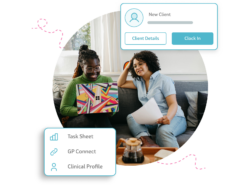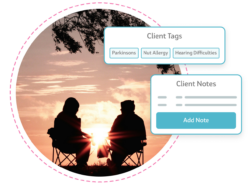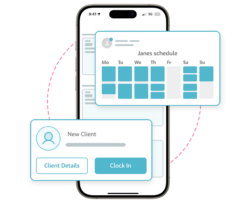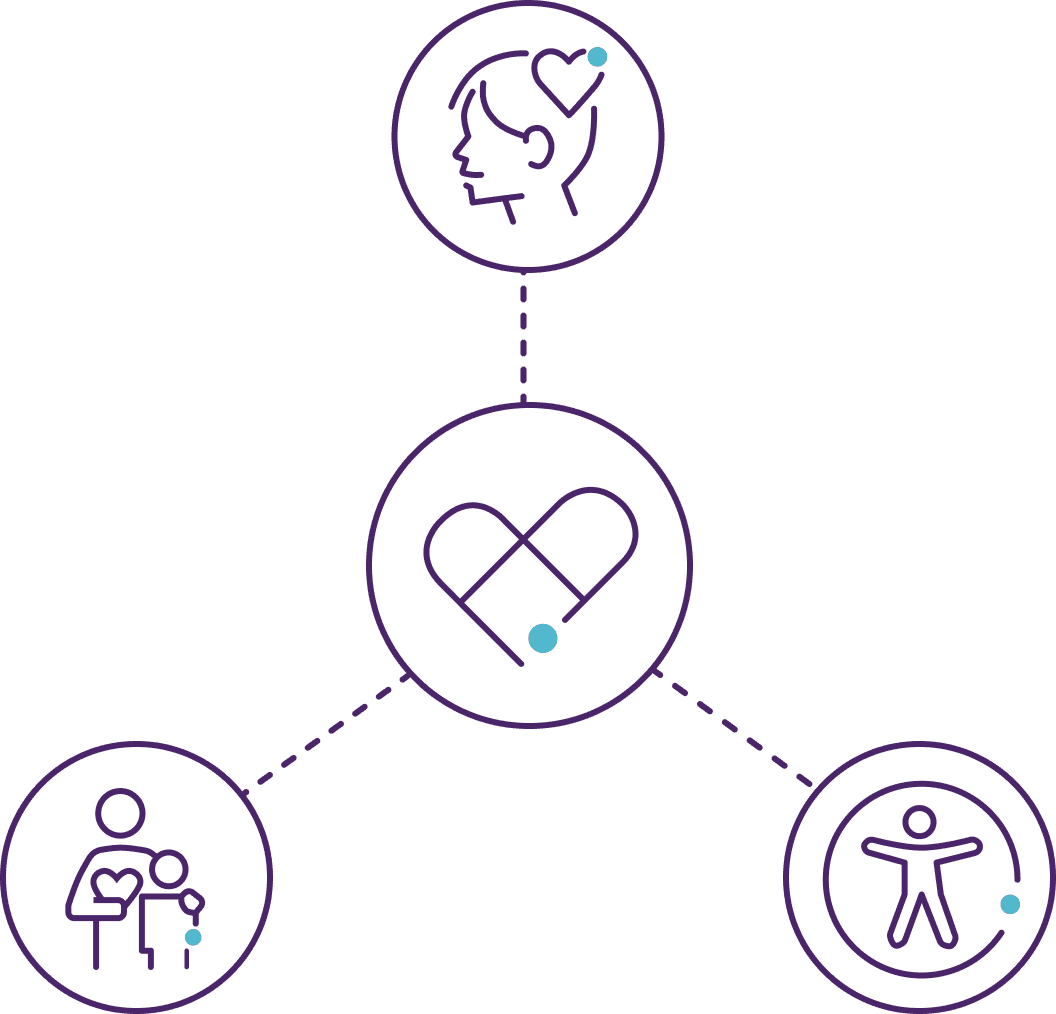Streamlining Home Care: The Benefits of Integrated Software Solutions
Understanding Home Care Needs:
Home Care providers face a unique set of challenges when planning and delivering care, many of which can be rectified by implementing an integrated, all-in-one home care management solution.
Some of the most common issues we hear from some of our users include (but are not limited to):
- Ensuring the successful execution and delivery of a service user’s care plan by multiple staff members,
- Managing staff, updating schedules, rotas and runs at short notice with little advance warning,
- Streamlining processes and procedures to ensure that staff are not overwhelmed,
- Hiring, training and retaining qualified staff,
- Easing the administration overhead on care staff,
- Rotating staff to form teams that serve individual service users,
- Finding the correct locations of service users in large urban areas, and
- Accessing service users in remote locations that are not served by public transport.

Key Features of Integrated Software Solutions:
Home care management software comes packed with functionality that is designed to streamline operations, reduce staff’s administrative burden, and transform service users’ outcomes.
Here are some of the ways in which integrated care management solutions help transform home care organisations:
- Skill-based tag scheduling to match carers with clients based on preferences, special care requirements, allergies, language, qualifications, and skills,
- Drag-and-drop wallchart functionality to allow for speedy schedule changes that are instantly updated for carers and other stakeholders,
- Instant communication tools to communicate changes to care plans and schedules to carers and other stakeholders,
- Robust medication management tools to streamline medication processes and enhance service user safety,
- Extensive HR functionality to streamline workforce management processes such as staff appraisals and qualification expiration tracking,
- Self-service leave management portal to allow staff to effectively manage their own leave,
- Geo-fencing clock-in and clock-out functionality to eliminate false hour reporting and increase accountability among care staff,
- Digital timesheets and automated invoicing to ensure staff are only paid for the hours they work, and
- Centralised database to allow for swift remote access to service user data and other key documents, meaning staff have access to required information whenever and wherever they need it.
“We’re able to update OneTouch immediately with any changes to a person’s health or care. No paperwork, just instant notifications. If there’s important information that carers need to pass on to paramedics, they’re able to quickly identify a range of factors, including whether someone is on blood thinners, or if they have a DNR in place.” – Carly Trevett, Registered Manager, Agincare.
Improving Service User Outcomes with Technology:
One of the most tangible ways in which integrated home care software can enhance service users’ outcomes is by prompting and recording the delivery of key care events (e.g., medication administration) which ensures that providers are notified and prompted to carry out key care tasks in a timely manner.
These notifications can be configured to trigger at set times when a specific task is scheduled to occur, providing additional safeguarding for service users as care providers are prompted to deliver the appropriate care.
When each key task has been actioned, the provider is required to leave a comment before they can mark the action as complete, adding yet another layer of protection for service users, and providing additional information for providers that can be used in future care planning efforts. Family members also benefit from knowing that the task has been completed.
Moreover, when key care events are not actioned and marked as complete, the software will alert all key stakeholders that the event was missed.
Home care management software also enables care providers and their service users to set different goals and target outcomes in which their progress can be tracked, monitored, and evaluated, enabling providers to create a more personalised care plan for each service user.
Additionally, each action that is recorded is time and date-stamped and is also signed off by the individual carer who completed the task, providing complete transparency into the care being delivered and streamlining the reporting process for auditing purposes.
The digital care planning suite of functionality within comprehensive home care management software should come with “Digital Diary” functionality that enables service users to reflect on the care they have received which provides carers with an additional resource to monitor service users’ progress and can also inform the development of future care plans.

Data plays a major role in enhancing the quality of care being delivered and can even increase the client’s satisfaction with the care they are receiving.
This is largely done by creating hyper-personalised care plans that are tailored to the individual service user. These care plans are underpinned by the service user’s data, how they engage with their care, and their personal care goals and aspirations.
This enables providers to be as specific as to how service users like their cup of tea in the morning. This level of personalisation enhances client satisfaction as their voice is heard and their preferences are taken into account at all stages, meaning that they are more likely to engage with their care.
Data can also better enable care providers to predict the needs of the service user, allowing schedulers to pre-emptively allocate resources based on projected trends.
Moreover, without adequate and accurate client data, providers would be unable to complete care assessments and evaluations, resulting in gaps in service delivery and client care.
Data also plays a significant role in enhancing the collaboration and continuity of care for individuals in receipt of multiple forms of health and social care, across multiple locations and from multiple providers. When providers have access to sufficient client data, they are empowered to coordinate care more effectively, and as a result, reduce the gaps in service user’s care and enhances their care outcomes.
Cost Efficiency and Resource Allocation:
Providers who implement effective integrated home care software will likely also see a significant reduction in operational costs as the system will enable them to do more with less.
Some of the ways in which integrated home care software can improve cost efficiency and resource allocation include:
- Digital schedules allow for easy optimisation, route planning and gap identification to ultimately reduce operational and resource costs,
- Instant communication tools streamline the coordination of care between different providers and care teams,
- An extensive centralised document template library allows for the creation of templated documents, such as templated runs, care plans, and staff appraisals,
- Shift bidding functionality enables care staff to bid on available shifts based on their preferences and qualifications,
- A Centralised database allows for swift remote access to staff and service user data, ensuring staff have access to the correct data whenever, and wherever they need it, and
- AI-powered care plan summary analyses service user records and can provide care staff with an overview, enabling care staff to see an at-a-glance view of service users care records.
When incorporated into care provision, home care management software can help streamline operations, reduce expenditure, and enhance outcomes for both carers and your service users.
“It’s changed the way that we work. Previously the homecare team would sign the prior week off on a Monday for the week before. now, everything’s authorised on a daily basis. We have a lot of shifts to approve and the process goes entirely through OneTouch now which has proven easier and so much quicker.” – Jo Boardman, Finance Director, Alcedo Care.
Future Trends in Home Care Software:
As the care industry evolves it is crucial that care management software evolves alongside it to meet the ever-changing requirements. One innovation ahead of the curve that is transforming home care provision is GP Connect functionality.
GP Connect is a service that has been developed by the NHS over the past few years, that enables authorised health and social care professionals to seamlessly access and share service user information between different health and social care systems.
This functionality ensures that providers have access to the most up-to-date client information, empowering the provider to make more informed decisions when planning and delivering person-centred care.
Additionally, by having access to the most up-to-date client information, providers can seamlessly continue providing care to service users transitioning between different care settings, ultimately improving the quality of care being delivered.

Whilst care management software has evolved alongside the industry, there are a number of potential innovations we could see in the future which would transform all aspects of care planning and delivery.
One such innovation is integrating with wearable smart technology as a means of tracking and recording service users’ key health information.
Modern smart technology such as smartwatches and Bluetooth earphones already have a wide range of accessibility features designed to assist people in their daily lives and the potential for future developments is endless.
Moreover, the standardisation of terminology set out by the PRSB and the push for the digitisation of the care sector brings additional opportunities for providers to integrate smart technology into the care planning and delivery processes.
Paired with the standardisation of terminology and client demographics, GP Connect has already had a massive impact on both the health and social care sectors. However, as GP Connect is still in its initial stages, it is currently only available in the UK to CQC-registered providers.
With the hopes of other countries following suit, the opportunities for future use cases are endless as the system continues to be developed and rolled out on a local, natation, and international level.
Book a demo with OneTouch Health to see the benefits of implementing a comprehensive all-in-one care management system into your home care organisation.



